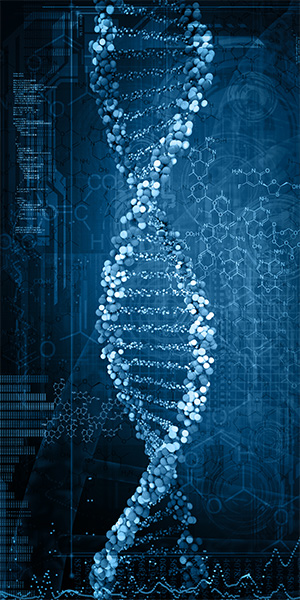Life Sciences 11 (formerly Biology 11)
View the complete Learning Outcomes for this course: Biology 11 PLO
It is recommended that students complete: Science 10 or equivalent.
Links to Readings for Life Sciences 11 First Assignment:
- Unit 1, Lesson 1: Introduction to Biology & The Scientific Method
- Textbook Readings for Lesson 1
- Unit 1, Lesson 2: Cells & The Microscope
- Textbook Readings for Lesson 2
Overview : Biology is the study of life and life processes. In Life Sciences 11, students focus on the following topics: basic cell biology, ecology, biodiversity, evolution, microbiology, botany and zoology. This course allows students to study a wide variety of organisms through many lab experiments.
Unit 1: Fundamentals of Biology
- Lesson 1: Introduction to Biology: science and the scientific method; biology as the study of life; unifying themes in biology
- Lesson 2: Cells and the Microscope: cell theory; cell structure and function; history of microscopes; parts of the compound microscope; using the compound microscope; calculations related to the microscope
- Lesson 3: Ecology: ecosystem structure; energy flow through an ecosystem; photosynthesis and cellular respiration; factors that limit population growth; the process of succession
- Lesson 4: DNA: the structure of DNA and nucleotides; pyrimidines and purines; genes and chromosomes
- Lesson 5: Evolution: the role of sexual reproduction in variation and evolution; the process of natural selection; evolutionary models and theories; convergence, divergence and speciation; population genetics and the role of extinction in evolution
- Lesson 6: Biodiversity: taxonomy and the classification of organisms; the kingdoms and domains of living things
Unit 1 Test covers the work of Unit 1.
Unit 2: Microbiology
- Lesson 1: Viruses and Bacteria: basic structure of prokaryotic cells; types and characteristics of bacteria; beneficial and harmful roles of bacteria; basic structure of viruses; viral specificity; lytic and lysogenic cycles; the effect of virulence on human health and the body’s defenses
- Lesson 2: Protists: characteristics of protists; basic structure of eukaryotic cells, the differences between phytoplankton and zooplankton; the life cycle of a pathogenic protist; the structural adaptations of protists and their diverse roles in food chains
- Lesson 3: Fungi: characteristics of fungi; the various growth conditions for fungi; life cycles of certain fungi; the adaptations of fungi and their diverse roles in ecosystems
Unit 2 Test covers the work of Unit 2.
Unit 3: Botany
- Lesson 1: Diversity of Plants: characteristics and adaptations of mosses and ferns; the ecological roles of mosses and ferns; ecological and economic importance of gymnosperms; characteristics and adaptations of angiosperms
- Lesson 2: Plant Structure and Function: organ and tissue systems of plants; cells that make up vascular tissue; types and functions of roots and stems; the role of meristems in primary and secondary stem growth; how the structure of a leaf enables it to carry out photosynthesis and gas exchange
- Lesson 3: Plant Reproduction: the reproductive structure of gymnosperms and angiosperms; pollination; the structure and function of cones and flowers; the life cycles of gymnosperms and angiosperms; seed development and germination
Unit 3 Test covers the work of Unit 3.
Unit 4: Zoology
- Lesson 1: Introduction to Animals: the characteristics of animals, body plans and symmetry of animals, tissue layers, body cavities & early development in animals
- Lesson 2: Porifera: characteristics and adaptations of the Phylum Porifera; ecological roles of sponges; the process of filter-feeding in sponges
- Lesson 3: Cnidaria: characteristics and adaptations of Cnidarians; the ecological roles of Cnidarians
- Lesson 4: Worms (Playhelminthes, Nemetoda and Annelida): characteristics and adaptations of the platyhelminths, nematodes and annelids; the characteristics of a successful parasite; the life cycle of a parasitic flatworm; the ecological roles of the platyhelminthes, nematodes and annelids
- Lesson 5: Mollusks: characteristics and adaptations of mollusks; the diverse ecological roles of mollusks
- Lesson6: Echinoderms: characteristics and adaptations of echinoderms; the diverse ecological roles of echinoderms
- Lesson 7: Arthropods: characteristics and adaptations of arthropods; growth and development in arthropods; the diverse ecological and economic importance of arthropods; the distinguishing features that determine the success of insects
- Lesson 8: Chordates: characteristics of two non-vertebrate chordates; characteristics and adaptations of the vertebrate classes; the diverse ecological role of vertebrates; how the amphibians have adapted to life on land; the external and internal structures of a frog and their functions; how the birds have adapted to flight; the difference between endotherms and ectotherms
Unit 4 Test covers the work of Unit 4.
Assessment:
- Quizzes (14 in total; includes First Assignment): 30%
- Assignments (Study Notes, Glossaries, Research project, Article analysis): 30%
- Tests (4 in total): 40%
Required Resources: Textbook Biology (Miller & Levine 2004) – provided. A computer with internet access and a scientific calculator.

